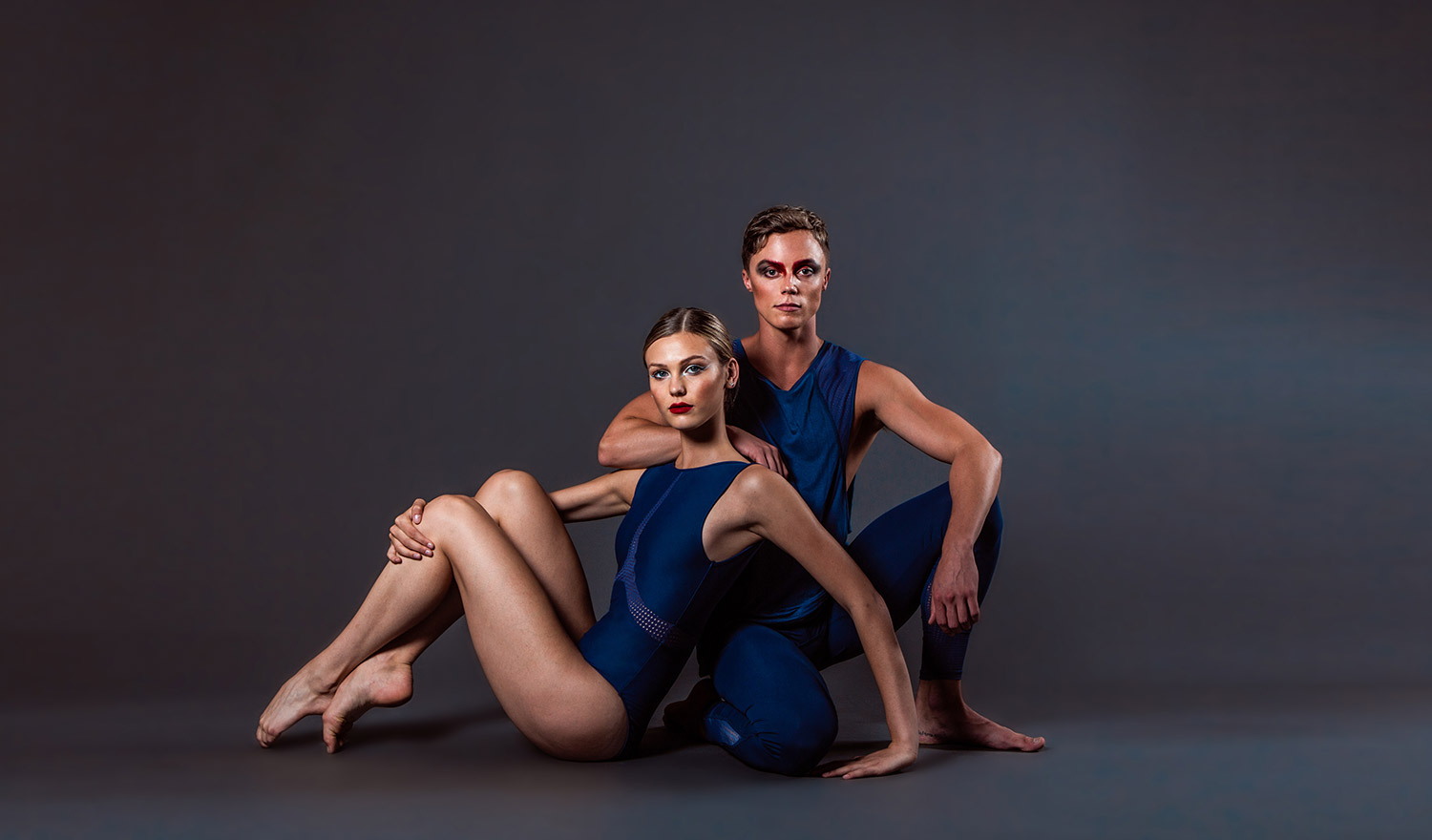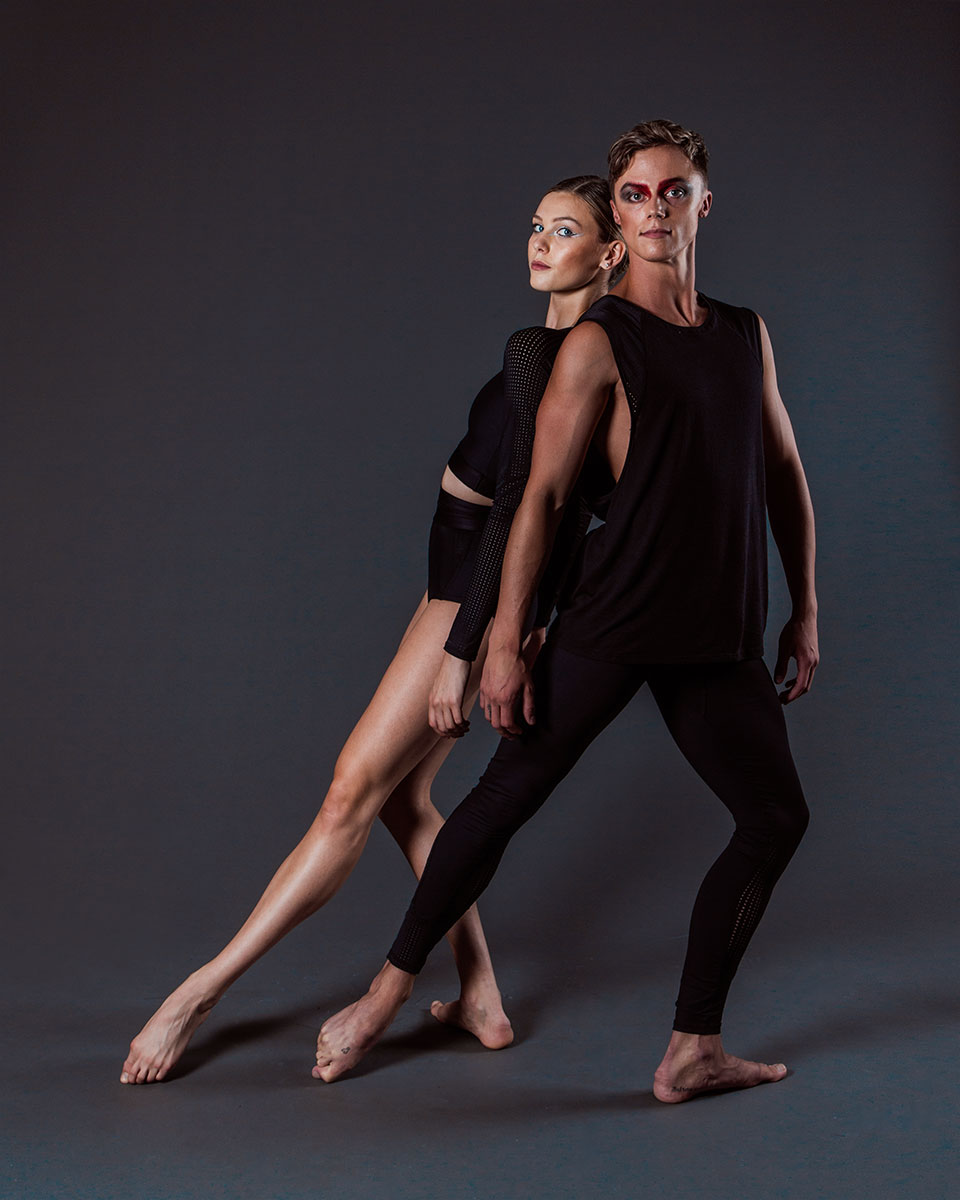The Magic of Pas De Deux: How To Be A Great Partner
In dance, we tend to define a pas de deux as a sequence performed by two dancers. The term is French for ‘two-step’, a translation that is fitting because it suggests the importance of being in sync; ‘two-stepping’ together as one. The challenge of performing the perfect pas de deux sequence is finding the point of harmony and balance between you and your partner, and a sense of trust in one another that gives you the freedom to dance together without fear. It is not enough to rely on the other person for support; to be a good partner you have to work as a team. We’ve put together five helpful tips to take your upcoming pas de deux rehearsal or performance to the next level.
1. Solid Technique
Dancer Zoe Cavedon, pictured in our latest campaign for the Coda Collection, believes that your technique is key when you start to train in pas de deux. “Maintain your regular ballet and pointe technique, and try not to shift or move differently, as a change in posture can make it difficult for your partner,” Zoe says. Dancers who drop their regular class in the lead up to a performance to focus solely on pas de deux rehearsals usually find it detrimental to the final result. You should continue to take class and hone your solo technique so that your partner is getting you at your best. If you are both strong technical dancers separately, you will be better prepared to dance together.
Jack wears the Alpha Legging and Aero Singlet in Black.
Zoe wears the Xena Crop and Xena Brief in Midnight Blue.
2. Core Strength
Core strength is the secret to making lifts and difficult steps look effortless. It is not enough for the male dancer (who is usually lifting the female) to be strong. “As a female, it is important to keep lifted and maintain a strong core,” Zoe explains. “This way your partner can feel your weight and know exactly where you need to be.” If you don’t hold your core muscles while you are being lifted you will feel like a dead weight, which will make it harder (and more dangerous) for both of you. Equally, if you are lifting another dancer, it is important that you engage your core and use safe lifting techniques to prevent injury. It can be helpful for both of you to integrate core strengthening exercises into your warm-up before you rehearse, so that you can activate the key muscles in advance.
3. Listening Skills
Jack Hersee, also pictured in our Coda Collection campaign, believes that being a good listener can make all the difference. “Always listen to your partner,” says Jack, “and don't ever be offended by their criticism. Listening to how you can better serve your partner will help you to grow.” Dance is often a selfish art form. As a performer you are trained to focus on yourself, your body, and your technique. If something isn’t working in your pas de deux routine, it can be frustrating, and it is easy to blame your partner. After all, you understand your body better than anyone, and it might feel like you are doing everything right. However, listening to each other and being constructive with your feedback will make you both better dancers. Something that works one way solo can be completely different when another dancer is in the mix.
“Listening to how you can better serve your partner will help you to grow.”
Zoe wears the Xena Crop and Xena Brief and Jack wears the Alpha Legging and Aero Singlet in Black.
4. Open Mind
Sometimes pas de deux requires problem solving skills. Different combinations of height, dance styles, and a myriad of other factors can affect the mechanics of certain moves. What works for one pair of dancers may not work for another, so it’s important to go into class or rehearsal with an open mind. Coming up with solutions that work best for you and your partner will help you to bond, and you won’t go into a performance worried about nailing a move that has been hit and miss in rehearsal. Try not to get caught up in replicating the workings of a lift or a turn so perfectly that you lose sight of the final outcome - if you need your partner’s hand to be higher than someone else might, that’s OK.
Zoe wears the Misha Leotard and Jack wears the Alpha Legging and Aero Singlet in Midnight Blue.
5. Mutual Trust
“Trust is extremely important in partnering,” says Zoe. “Without it, the movement can look tentative and never reach its full potential.” This is perhaps the most vital component of a successful pairing. If you don’t trust your partner, how can you look comfortable and poised as you are lifted above their head? How can you support their turn if you’re holding back in case they fall off balance and knock you over? Trust is needed on both sides, so that you can both dance to the best of your ability. Any doubt will get in your way. If you don’t feel like you and your partner have established trust, remember that it takes work and time. If you both practice your technique, build your core strength and listen with an open mind, the trust element will come.
Zoe wears the Misha Leotard and Jack wears the Alpha Legging and Aero Singlet in Midnight Blue.
If you have any further tips for being a great pas de deux partner, let us know in the comments below!
Article by Emily Newton-Smith
Photographs by Elly Ford










